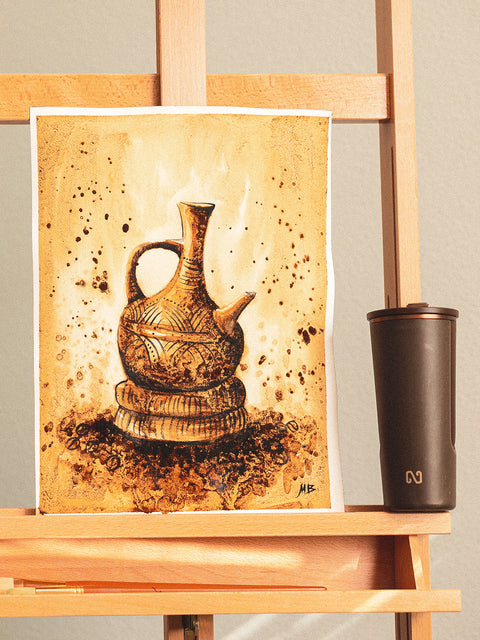
From Farm to Cup: The Journey of the Coffee Bean
Every coffee drinker is familiar with the coffee bean and the incredibly satisfying aroma and beverage that it produces. But not many are familiar with where the bean comes from.
Is it a fruit? Does it grow on a shrub or a tree? Where does it grow?
Let us take you on the journey of the coffee bean—from the farm to your cup.
The Origins: Coffee Farming
It all begins on the coffee farm, where coffee beans are grown in regions known as the "Coffee Belt," located between the Tropics of Cancer and Capricorn. Coffee trees thrive in rich soils, high altitudes and a subtropical climate. So it’s no wonder that countries like Brazil, Colombia, Ethiopia and Vietnam are among the largest coffee producers globally.
Did you know that most coffee plants take 5 years to start producing a harvestable crop, which is the equivalent of about 1 lb of roasted beans per year?
Cultivation and Harvesting
The fruit of the coffee plant, known as cherry, grows in clusters and is perhaps the prettiest part of the tree.
After 9 months of careful nurturing, these cherries change from a raw green color to a ripe, captivating ruby red and are ready to be harvested. Skilled harvesters carefully hand-pick these beans to ensure the best quality and flavor. This is a very labor-intensive work and time-consuming process.
In most regions, coffee farms have one harvest per year.
Processing the Cherries
Once harvested, the cherries go through various processing methods to separate the beans from the fruit.
The three primary methods are:
- Washed Method: The cherries are pulped to remove the outer skin and then soaked in water to ferment. This process removes the mucilage, a thick, gluey substance, leaving behind clean coffee beans.
- Natural Method: The cherries are dried whole, allowing them to naturally ferment and dry. Once dried, the beans are hulled to remove the outer layer.
- Honey Method: A hybrid of the washed and natural methods, the cherries are partially pulped, leaving some mucilage on the beans during drying. This imparts a unique flavor profile.
Sorting and Roasting
After processing, the coffee beans undergo sorting to remove any defects or impurities. This meticulous process ensures only the highest quality beans proceed to the next stage. The sorted beans are then ready for roasting.
Roasting is an art that transforms the raw, green coffee beans into the aromatic and flavorful beans we recognize. The roasting process is a delicate balance of time and temperature, allowing the beans to develop their distinct characteristics—light, medium or dark roast.
Grinding and Brewing
Once roasted, the coffee beans are ground to the desired consistency based on the brewing method. Whether it's a French press, espresso machine or drip coffee maker, the grind size plays a crucial role in extracting the flavors.
The final destination of the coffee bean journey is you! There are many ways to brew a delicious cup of coffee, including pour-over, espresso and AeroPress, each offering a unique coffee experience.
Conclusion
The journey of coffee from farm to cup is a remarkable process that involves dedication, skill and expertise. From the coffee farm where beans are nurtured to the roasting and brewing methods that extract the flavors, each step contributes to the rich and diverse world of coffee.
If you’re looking for a reusable coffee mug to enjoy your hot cup of coffee, the Ethio Cup is for you. Made with recycled stainless steel and coffee grounds, this sustainable cup is designed to reduce waste while looking stylish.
